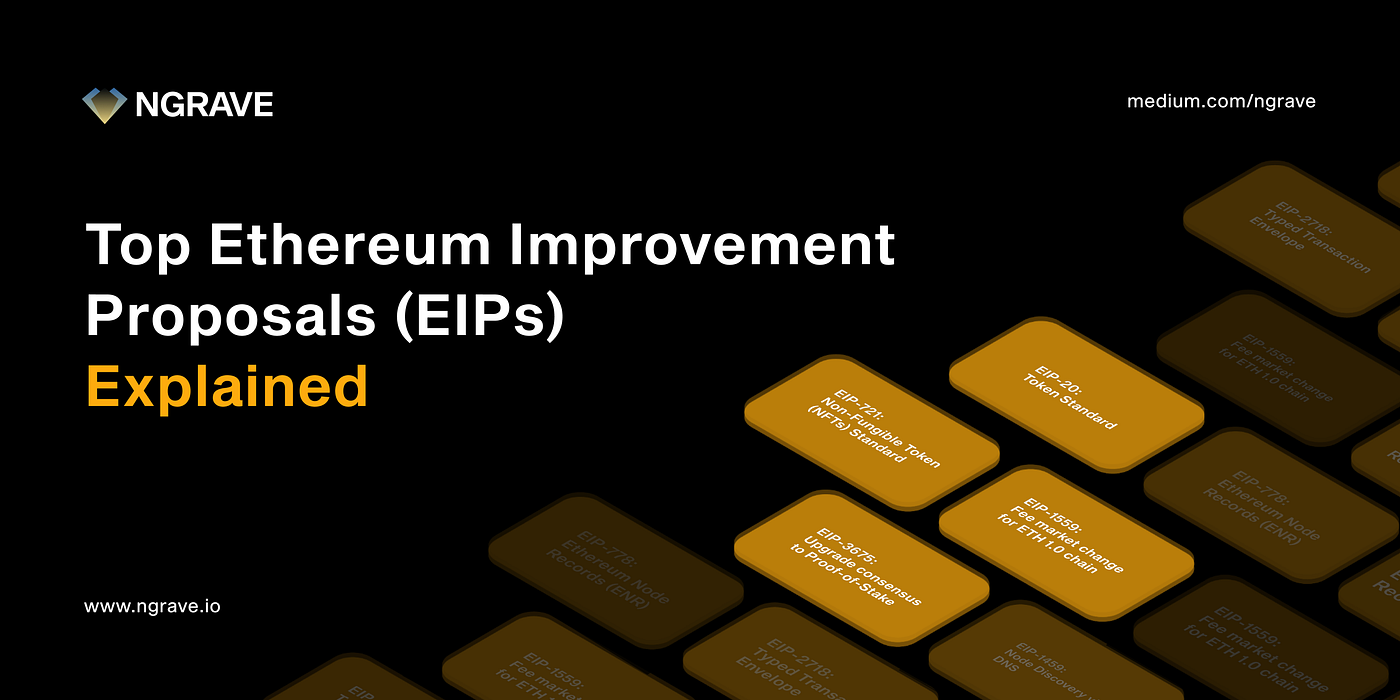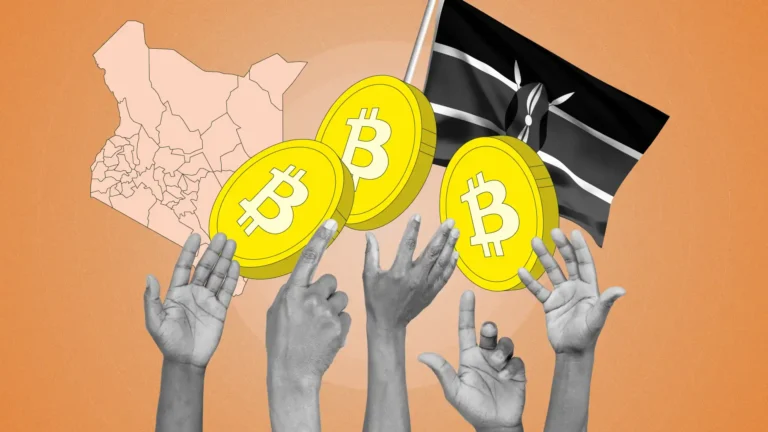Ethereum is one of the most dynamic and adaptive blockchain ecosystems ever created. Its constant evolution — from proof-of-work to proof-of-stake, from basic token standards to complex rollups — is largely thanks to a process known as Ethereum Improvement Proposals (EIPs). These proposals are the beating heart of Ethereum’s development, the blueprint that guides how …
EIPs Explained: How Ethereum Improvement Proposals Shape the Future

Ethereum is one of the most dynamic and adaptive blockchain ecosystems ever created. Its constant evolution — from proof-of-work to proof-of-stake, from basic token standards to complex rollups — is largely thanks to a process known as Ethereum Improvement Proposals (EIPs). These proposals are the beating heart of Ethereum’s development, the blueprint that guides how the network grows, scales, and adapts to new challenges.
But what exactly are EIPs? How do they shape the network’s future? And why should anyone who uses or invests in Ethereum care? Let’s dive deep into how this open, collaborative process drives innovation across one of the most influential blockchains in the world.
Understanding EIPs: The Foundation of Ethereum Evolution
In simple terms, an Ethereum Improvement Proposal (EIP) is a design document that describes a new feature, process, or standard for the Ethereum network. Each EIP outlines the motivation for the change, the technical specifications, and the rationale behind it.
Think of EIPs as the democratic code of innovation for Ethereum — a system where anyone in the community can suggest improvements, discuss them openly, and, if the idea gains enough support and technical merit, see it implemented into the protocol.
This model ensures Ethereum doesn’t rely on a single company or governing body to evolve. Instead, it harnesses collective intelligence from developers, researchers, and community members worldwide.
The Types of EIPs and What They Do
Not all EIPs are created equal — each serves a specific purpose within Ethereum’s ecosystem. Broadly, EIPs are divided into several types:
- Core EIPs – These proposals affect the core consensus protocol. Examples include changes to block validation, consensus rules, or the Ethereum Virtual Machine (EVM). The Merge (EIP-3675), which transitioned Ethereum to proof-of-stake, is one of the most significant core EIPs ever implemented.
- Networking EIPs – These focus on peer-to-peer communication protocols, improving how Ethereum nodes interact and share data across the network.
- Interface EIPs – These standardize APIs and interfaces for applications and wallets, ensuring developers can build interoperable tools.
- ERCs (Ethereum Request for Comments) – These are arguably the most famous category, governing standards for tokens and smart contracts. For example:
- ERC-20 standardized fungible tokens.
- ERC-721 introduced NFTs.
- ERC-1155 created multi-token standards used in gaming and digital collectibles.
Together, these categories form the backbone of Ethereum’s adaptability, allowing it to grow beyond its initial vision as a smart contract platform into a thriving ecosystem spanning DeFi, NFTs, gaming, and beyond.
From Proposal to Implementation: How an EIP Becomes Reality
The EIP process mirrors the way open-source software communities collaborate — transparent, technical, and consensus-driven. Here’s how an EIP moves from concept to code:
- Idea Stage – A developer (or team) identifies a problem or opportunity and writes a draft EIP describing their proposed solution.
- Discussion and Feedback – The draft is shared publicly (usually via GitHub or community forums) where developers and researchers debate its merits, challenges, and alternatives.
- Formal Review – If the proposal gains traction, it’s reviewed by Ethereum core developers for feasibility and alignment with long-term goals.
- Testing and Implementation – If accepted, it’s implemented in testnets to ensure security and stability before being merged into the main network through a hard fork.
This transparent, community-driven process ensures no single entity controls Ethereum’s direction — a sharp contrast to centralized systems where decisions happen behind closed doors.
Iconic EIPs That Changed Ethereum Forever
Over the years, several EIPs have left an indelible mark on Ethereum’s history. Here are a few that define the network’s evolution:
- EIP-1559 (The Fee Burn Mechanism)
Introduced in 2021, this EIP revolutionized Ethereum’s fee model by replacing the traditional auction-style gas system with a base fee + tip model. The most groundbreaking feature? It burns a portion of transaction fees, making ETH a deflationary asset. - EIP-3675 (The Merge)
This EIP formalized Ethereum’s transition from proof-of-work to proof-of-stake, drastically reducing its energy consumption and setting the stage for future scalability upgrades. - EIP-4844 (Proto-Danksharding)
A newer proposal, EIP-4844 introduces “blobs” of data for rollups, a key step toward full sharding. This update is central to Ethereum’s scalability roadmap, dramatically lowering layer-2 transaction costs.
Each of these EIPs represents more than a technical upgrade — they symbolize Ethereum’s commitment to constant improvement and community-led progress.
Why EIPs Matter to Developers, Investors, and Users Alike
For developers, EIPs define the technical standards that ensure compatibility across dApps, wallets, and smart contracts. Without them, Ethereum would quickly fragment into incompatible versions.
For investors, understanding EIPs provides early insight into future network capabilities — whether it’s lower transaction fees, enhanced scalability, or improved security. Major EIPs often influence Ethereum’s market perception and price trends.
And for everyday users, EIPs directly impact experience — cheaper gas fees, faster transactions, and innovative features all stem from this evolving framework of proposals and upgrades.
EIPs and the Future of Ethereum Governance
As Ethereum grows, so too does the complexity of its governance. The EIP process stands as a model of transparent and decentralized coordination, proving that large-scale blockchain innovation can thrive without centralized leadership.
Looking ahead, initiatives like EIP-3074 (Account Abstraction) and EIP-7702 aim to make Ethereum wallets smarter and more user-friendly, bridging the gap between technical complexity and mass adoption. These proposals reflect Ethereum’s constant push toward a more scalable, accessible, and user-centric future.
Final Thoughts: A Living Blueprint for the Decentralized Era
Ethereum’s greatest strength lies in its adaptability — and EIPs are the engine behind it. Every time you send a transaction, mint an NFT, or stake ETH, you’re benefiting from a system shaped by thousands of open discussions and technical refinements.
In a world where many technologies stagnate or centralize, Ethereum’s EIP process stands as a testament to the power of open collaboration. It ensures that the network remains not just functional, but visionary — constantly redefining what’s possible in decentralized technology.
As the blockchain ecosystem matures, one thing remains clear: the next big leap for Ethereum will, once again, begin as an EIP — a simple idea that sparks a global movement toward a smarter, more decentralized future.







